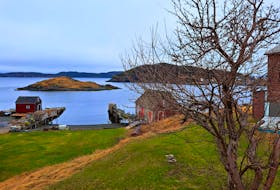The current Government of Canada has made a strong argument for addressing climate change. In this context, the most critical issue today is the rapid changes taking place in Canada’s north.
Melting permafrost has effectively shut down the railway track to Churchill, and is impacting runways in areas of discontinuous permafrost. To the north, ice formation is declining, resulting in more optimism about traversing the Northwest Passage. Before a major disaster occurs, Canada needs to have adequate icebreaking capability in the area, along with a capacity to react to emergencies, potentially ones of considerable magnitude.
China, with no arctic regions, now has ice-breaking capacity that substantially exceeds that of Canada, and has already crossed through the Arctic Ocean.
Ice cover in the Arctic this past winter was some 20,000 square kilometres less than the previous year, which itself was the lowest since measurements began in the late 1970s. Despite more open water this summer and fall, and thinner ice in places, there will still be ice.
A cruise ship carrying 1,000 passengers plus a crew of 600 plans to traverse the Northwest Passage this summer, and Canada is not prepared to deal with it. Unfortunately, Canada lacks heavy ice-breaking capacity to protect travellers and to address Arctic environmental problems.
Many advisers have warned this would happen, so it should come as no surprise. The previous government deferred investments in ice-breaking capacity into the somewhat distant future. The new government appears to have accepted that same model. With the current timetable, Canada’s proposed new Coast Guard heavy icebreaker will be following commercial ships through the Passage about five or six years late. The need is now.
Hopefully, no lives will be lost because due diligence was consciously set aside in favour of cost savings.
China, with no arctic regions, now has ice-breaking capacity that substantially exceeds that of Canada, and has already crossed through the Arctic Ocean. It’s only a matter of time before it decides to navigate the Northwest Passage, raising security issues. China is not the only potential challenger: as the Russian economy wobbles, Vladimir Putin appears to seek military-oriented events to shore up his public opinion at home.
The United States recently opened up a new area in the eastern Beaufort Sea (arguably encroaching on Canadian Arctic Sea territory) to oil and gas exploration. Beyond the territorial issue lies the question of why develop more Arctic sources when mainland reserves in both Canada and the U.S. can supply North American needs for decades?
The demand for petroleum and gas-based energy will decline long before existing sources are exhausted. The realities of climate change and the active discussions internationally on reducing CO2 emissions are setting the stage for this eventuality.
In the 1950s and ’60s Canada (with considerable help from the U.S.) had a much greater presence and capacity in the Arctic. Many of the runways and facilities remain useable. Not all these need be operational today, but drones, aircraft, satellites, ships and ground personnel will be needed in at least two locations to meet realistic requirements as reduced ice cover opens up extended Arctic travel options.
Although former PM Stephen Harper proposed Nanisivik as “the” Arctic deep-sea port, key stations near each end of the Passage are essential to provide reconnaissance and search and rescue (SAR) roles throughout the Passage, as well as areas to both the south and north. Nanisivik is as good a location for the east side, although Iqualuit will always play a role. To the west, Cambridge Bay or Tuktoyaktuk deserve consideration. In between, Churchill, if the railroad was strengthened to better accommodate trains over the periodic soft permafrost terrain, could serve Prairie provinces and western Ontario as a central shipping point for currently landlocked locations.
The combination of these two sites would provide a solid base for surveillance and protection operations, research and data collection and traffic management. Resolute could be an alternative to Nanisivik, but aside from its longer-term existence and airfield, it does not compete with the more modern and serviceable facilities for aircraft and ships nearby at Nanisivik.
An all-encompassing strategy to plan for and implement required infrastructure and economic security capabilities is required now.
Jim Collinson
St. John’s







